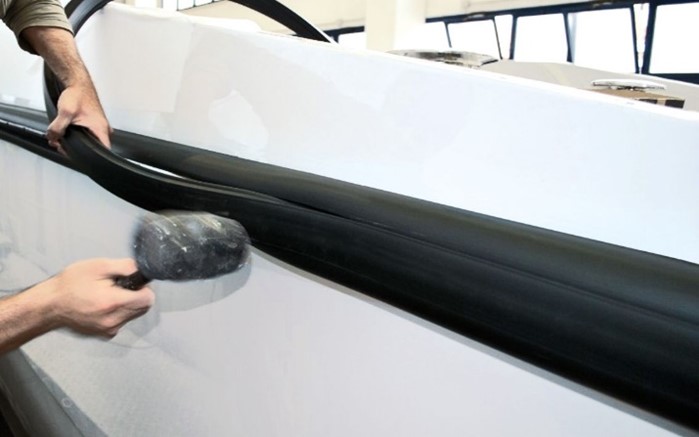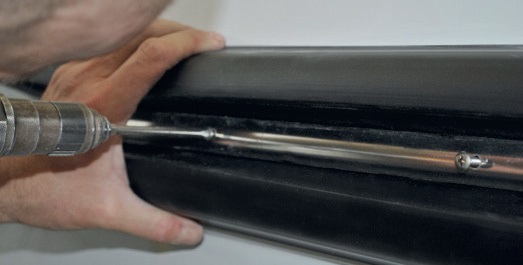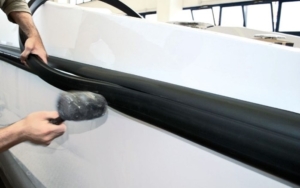How to repair Boat Rub Rails
Rub rails are essential for protecting your boat from collisions and abrasions. However, over time, they can get damaged and may need repairs. Here’s a step-by-step guide on how to repair rub rails, ensuring your boat stays protected and looks great.
Materials You’ll Need
- Replacement rub rail insert (if needed)
- Drill with screwdriver bit
- Rubber mallet
- (optional) Heat gun
- Screws and washers (marine-grade)
- Marine adhesive or sealant
- Utility knife
- Measuring tape
Step-by-Step Repair Process
Assess the Damage
Examine the rub rail to identify the extent of the damage. If the insert is damaged, you might need a replacement. If the base is damaged, it will require more extensive repair.
Remove the Damaged Section
Use a utility knife to carefully cut out the damaged section of the rub rail. If it’s the insert, this will be relatively straightforward. For the base, unscrew the affected area using a drill.
In this article you can follow the detailed instructions to perform this task.
Prepare the Replacement
Measure the length of the damaged section and cut the replacement insert or base to size. If you’re using a new insert, you might need to soften it with a heat gun to make it more pliable.
Install the New Insert
Position the new insert in place. Use a rubber mallet to gently tap it into the base, ensuring it fits snugly. If replacing the base, align it properly and screw it into place using marine-grade screws and washers.
Seal the Joints
Apply marine adhesive or sealant to the joints and screw heads. This step is crucial to prevent water ingress, which can cause further damage.
Test the Repair
Once the adhesive has cured, test the repaired section to ensure it’s secure. Press and flex the rub rail slightly to check for any movement or gaps.
Tips for effective repairs
Use Quality Materials: Always opt for marine-grade materials to ensure durability and resistance to harsh marine environments. Rub rails provide a wide range of top quality rub rails replacements for your boat.
Work in Small Sections: If the damage is extensive, repair small sections at a time to maintain control and precision.
Regular Inspections: Periodically inspect your rub rails for signs of wear and tear. Early detection allows for minor repairs before they escalate into major issues.
You can contact us anytime if you need support in replacing your Rub rails with our products; in our catalogs section you can also find product-mounting instructions for various types of installations.




